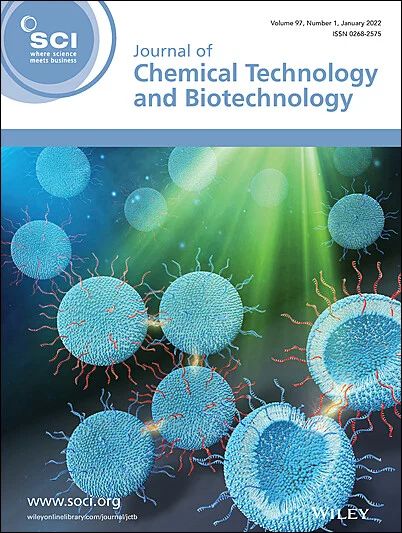求助PDF
{"title":"Ti-NTA/SnO2-Sb2O3电催化膜对印染反渗透浓缩液的高效处理","authors":"Chengjie Li, Yinghui Mo, Liang Wang, Heng Guo, Xiaoxue Ji","doi":"10.1002/jctb.7769","DOIUrl":null,"url":null,"abstract":"<div>\n \n \n <section>\n \n <h3> BACKGROUND</h3>\n \n <p>Printing and dyeing reverse osmosis concentrates (ROC) contain large amounts of salts and organic matter, which is a major environmental issue. The unique composition of such wastewater makes the use of traditional physicochemical techniques challenging.</p>\n </section>\n \n <section>\n \n <h3> RESULTS</h3>\n \n <p>In this paper, titanium dioxide nanotube arrays/SnO<sub>2</sub>-Sb<sub>2</sub>O<sub>3</sub> (Ti-NTA/SnO<sub>2</sub>-Sb<sub>2</sub>O<sub>3</sub>) electrodes were prepared by anodizing–cathodizing and sol–gel method for the electrocatalytic degradation of printing and dyeing ROC. Organic matter removal under different situations was examined, and the best treatment parameters were identified.</p>\n </section>\n \n <section>\n \n <h3> CONCLUSION</h3>\n \n <p>Following treatment, organic matter concentration dropped from 1600 to 50 mg L<sup>−1</sup>, or even less. The outstanding removal performance of the Ti-NTA/SnO<sub>2</sub>-Sb<sub>2</sub>O<sub>3</sub> electrode was validated by full-scan ultraviolet spectra, gas chromatography–mass spectrometry and three-dimensional fluorescence. Evaluation of the dissolved heavy metals and halogenated degradation process byproducts revealed that the electrocatalytic membranes were environmentally safe. These findings highlight the enormous potential of electrocatalytic membranes for the treatment of high-salt ROC when equipped with a Ti-NTA/SnO<sub>2</sub>-Sb<sub>2</sub>O<sub>3</sub> electrode. © 2024 Society of Chemical Industry (SCI).</p>\n </section>\n </div>","PeriodicalId":15335,"journal":{"name":"Journal of chemical technology and biotechnology","volume":"100 1","pages":"255-265"},"PeriodicalIF":2.8000,"publicationDate":"2024-10-27","publicationTypes":"Journal Article","fieldsOfStudy":null,"isOpenAccess":false,"openAccessPdf":"","citationCount":"0","resultStr":"{\"title\":\"Efficient treatment of printing and dyeing reverse osmosis concentrate by a Ti-NTA/SnO2-Sb2O3 electrocatalytic membrane\",\"authors\":\"Chengjie Li, Yinghui Mo, Liang Wang, Heng Guo, Xiaoxue Ji\",\"doi\":\"10.1002/jctb.7769\",\"DOIUrl\":null,\"url\":null,\"abstract\":\"<div>\\n \\n \\n <section>\\n \\n <h3> BACKGROUND</h3>\\n \\n <p>Printing and dyeing reverse osmosis concentrates (ROC) contain large amounts of salts and organic matter, which is a major environmental issue. The unique composition of such wastewater makes the use of traditional physicochemical techniques challenging.</p>\\n </section>\\n \\n <section>\\n \\n <h3> RESULTS</h3>\\n \\n <p>In this paper, titanium dioxide nanotube arrays/SnO<sub>2</sub>-Sb<sub>2</sub>O<sub>3</sub> (Ti-NTA/SnO<sub>2</sub>-Sb<sub>2</sub>O<sub>3</sub>) electrodes were prepared by anodizing–cathodizing and sol–gel method for the electrocatalytic degradation of printing and dyeing ROC. Organic matter removal under different situations was examined, and the best treatment parameters were identified.</p>\\n </section>\\n \\n <section>\\n \\n <h3> CONCLUSION</h3>\\n \\n <p>Following treatment, organic matter concentration dropped from 1600 to 50 mg L<sup>−1</sup>, or even less. The outstanding removal performance of the Ti-NTA/SnO<sub>2</sub>-Sb<sub>2</sub>O<sub>3</sub> electrode was validated by full-scan ultraviolet spectra, gas chromatography–mass spectrometry and three-dimensional fluorescence. Evaluation of the dissolved heavy metals and halogenated degradation process byproducts revealed that the electrocatalytic membranes were environmentally safe. These findings highlight the enormous potential of electrocatalytic membranes for the treatment of high-salt ROC when equipped with a Ti-NTA/SnO<sub>2</sub>-Sb<sub>2</sub>O<sub>3</sub> electrode. © 2024 Society of Chemical Industry (SCI).</p>\\n </section>\\n </div>\",\"PeriodicalId\":15335,\"journal\":{\"name\":\"Journal of chemical technology and biotechnology\",\"volume\":\"100 1\",\"pages\":\"255-265\"},\"PeriodicalIF\":2.8000,\"publicationDate\":\"2024-10-27\",\"publicationTypes\":\"Journal Article\",\"fieldsOfStudy\":null,\"isOpenAccess\":false,\"openAccessPdf\":\"\",\"citationCount\":\"0\",\"resultStr\":null,\"platform\":\"Semanticscholar\",\"paperid\":null,\"PeriodicalName\":\"Journal of chemical technology and biotechnology\",\"FirstCategoryId\":\"5\",\"ListUrlMain\":\"https://onlinelibrary.wiley.com/doi/10.1002/jctb.7769\",\"RegionNum\":4,\"RegionCategory\":\"生物学\",\"ArticlePicture\":[],\"TitleCN\":null,\"AbstractTextCN\":null,\"PMCID\":null,\"EPubDate\":\"\",\"PubModel\":\"\",\"JCR\":\"Q3\",\"JCRName\":\"BIOTECHNOLOGY & APPLIED MICROBIOLOGY\",\"Score\":null,\"Total\":0}","platform":"Semanticscholar","paperid":null,"PeriodicalName":"Journal of chemical technology and biotechnology","FirstCategoryId":"5","ListUrlMain":"https://onlinelibrary.wiley.com/doi/10.1002/jctb.7769","RegionNum":4,"RegionCategory":"生物学","ArticlePicture":[],"TitleCN":null,"AbstractTextCN":null,"PMCID":null,"EPubDate":"","PubModel":"","JCR":"Q3","JCRName":"BIOTECHNOLOGY & APPLIED MICROBIOLOGY","Score":null,"Total":0}
引用次数: 0
引用
批量引用

 求助内容:
求助内容: 应助结果提醒方式:
应助结果提醒方式:


